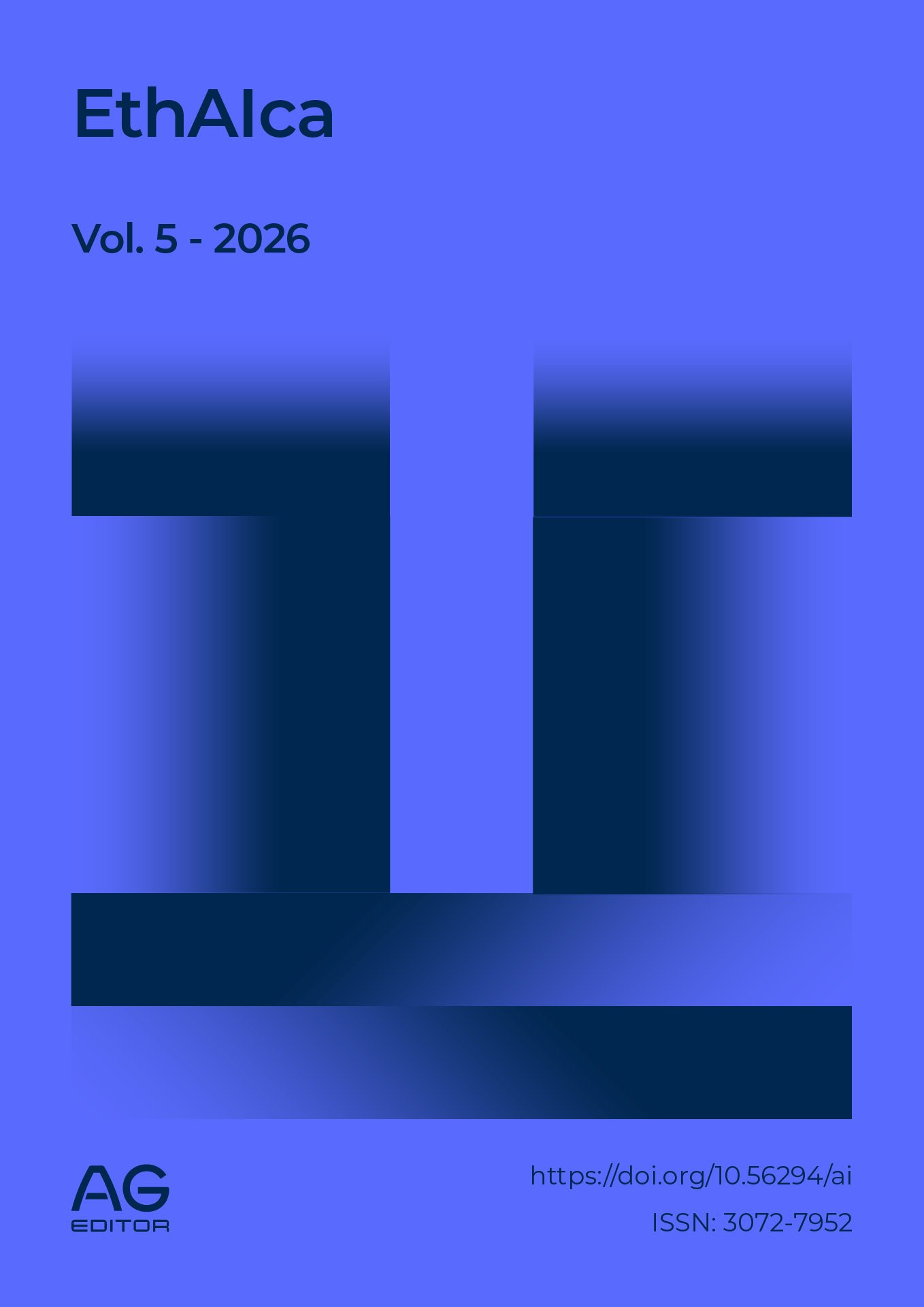Application of artificial intelligence in the field of legal and forensic medicine: advances and future challenges
DOI:
https://doi.org/10.56294/ai2026397Keywords:
Artificial intelligence, forensic medicine, criminology, forensic reconstruction, ethicsAbstract
Introduction: Artificial intelligence (AI) has emerged as a profoundly transformative tool in numerous fields of knowledge, and its application in legal and forensic medicine is opening a new chapter in forensic science. The development of the “JL-IDIF” system by the Forensic Research Institute (IDIF) has been recognized as an innovative step, setting precedents for the use of advanced technology for the recording and analysis of forensic data. AI represents an unprecedented opportunity to transform legal and forensic medicine, making these processes faster, more efficient, and more accurate. Methodology. An information search was conducted from January to May 2025. Information was collected from scientific articles, books, technical reports, and publications in specialized media, using databases such as PubMed, Scopus, Google Scholar, and websites of forensic and government institutions. This approach allowed for a comprehensive and well-founded synthesis of the available information. Conclusions. The emergence of artificial intelligence (AI) has transformed multiple areas of medicine, and its incursion into forensic and legal medicine marks the beginning of a new era in forensic practice. This review has shown that, while technological advances have demonstrated great potential, significant limitations remain related to data quality, the need for external validation, and the availability of adequate technological infrastructure. In Bolivia, initiatives such as the JL-IDIF project or the experimental implementation of generative AI models demonstrate the interest and initial capacity to explore these emerging technologies. AI should not be viewed as a substitute for human judgment, but rather as a powerful tool that enhances the work of experts, allowing them to focus on critical interpretation and decision-making.
References
1. Russell S, Norvig P. Artificial intelligence: a modern approach. 3rd ed. Boston: Pearson; 2016. p. 1. Available at: https://elibrary.pearson.de/book/99.150005/9781292153971
2. Kumar, Y., Koul, A., Singla, R. et al. Artificial intelligence in disease diagnosis: a systematic literature review, synthesizing framework and future research agenda. J Ambient Intell Human Comput 14, 8459–8486 (2023). https://doi.org/10.1007/s12652-021-03612-z
3. Heaton J. Ian Goodfellow, Yoshua Bengio, and Aaron Courville: Deep learning. Genet Program Evolvable Mach. 2018 Jun;19(3):305–7. https://doi.org/10.1007/s10710-017-9314-z
4. Tiinside. La biometría facial pasa la prueba en RJ y hasta junio se instalarán cámaras en todo el litoral [Internet]. 2024 [citado el 11 de enero de 2025]. Disponible en: https://tiinside.com.br/02/01/2024/biometria-facial-passa-no-teste-no-rj-e-cameras-inteligentes-serao-instaladas-em-toda-a-orla-ate-junho/
5. Gutierrez S. Inteligencia artificial reconstruye rostro de antioqueño asesinado hace 20 años en Europa. Pulzo [Internet]. 2024 [citado el 11 de enero de 2025]. Disponible en: https://www.pulzo.com/mundo/inteligencia-artificial-reconstruye-cara-hombre-asesinado-europa-20-anos-PP3995065A
6. Auza-Santiváñez JC, Quispe Cornejo AA, Hayes Dorado JP, Díaz Pérez B. Science education from the approach of innovation, science and technology. Salud, Ciencia y Tecnología [Internet]. 2022 Jul. 23 [cited 2025 May 26];2:64. Available from: https://doi.org/10.56294/saludcyt202264
7. Yadav M, Tiwari A. Forensic toxicology and its relevance with criminal justice delivery system in India. Forensic Res Criminol Int J. 2017;4(4):122-128. DOI: https://doi.org/10.15406/frcij.2017.04.00121
8. Auza-Santivañez JC, Sosa Remón A, Bautista-Vanegas FE, Cabezas-Soliz IN, Vargas Gallego I, Apaza-Huanca B, et al. Artificial Intelligence in the Intensive Care Unit: Present and Future. Seminars in Medical Writing and Education [Internet]. 2025 Mar. 18 [cited 2025 May 25];4:464. Available from: https://doi.org/10.56294/mw2025464
9. Li X, Wang M, Wang Z. Advances in forensic image processing with artificial intelligence. J Forensic Sci. 2020;65(4):1007-14.
10. Goodfellow I, Bengio Y, Courville A. Deep Learning. Cambridge, Massachusetts: The MIT Press; 2016. Available at: https://archive.org/details/deeplearning0000good
11. Zhang Z, Zhang X, Li S. Face recognition in the era of deep learning. J Comput Vis Image Underst. 2018;176:1–13. doi: 10.1016/j.cviu.2018.07.004. Available at: https://doi.org/10.1016/j.cviu.2018.07.004
12. Manning CD, Schütze H. Foundations of Statistical Natural Language Processing. Cambridge, MA: MIT Press; 1999. 680 p. ISBN: 0-262-13360-1.
13. Jurafsky D, Martin JH. Speech and Language Processing: An Introduction to Natural Language Processing, Computational Linguistics, and Speech Recognition. 3rd ed. Upper Saddle River, NJ: Pearson; 2020.
14. Cabello-Ayzama A. Implementación de inteligencia artificial en el derecho boliviano: análisis comparativo de Chat GPT y Gemini AI. YUYAY [Internet]. 2024 [citado 2025 Ene 9]. Disponible en: https://jlacolectivo.com/revistas/index.php/YUYAY/article/view/68/124.
15. Zhou Y, Li J, Chen H. 3D Scene Reconstruction for Forensic Analysis Using Artificial Intelligence. IEEE Trans Inf Forensics Secur. 2018;13(5):1289–1301.
16. Pavlidis P, Makedon F, Chiu K. Simulating Criminal Scenarios with Artificial Intelligence. J Digit Forensics Secur Law. 2021;16(1):15–25.
17. Pardoe I, Stone P. A Machine Learning Approach to Predicting Crime. En: Proceedings of the Fifth International Conference on Data Mining; 2008. p. 222–9.
18. Crissy R. Gran avance de la IA israelí para identificar a víctimas de Hamás [Internet]. 2024 [citado 2025 May 9]. Disponible en: https://www.ynetespanol.com/tendencias/ciencia-y-tecnologia/article/bjpdvn4q6.
19. Ministerio Público Fiscalía. Ministerio Público recibe por segunda vez el Premio Nacional a la Innovación Tecnológica con el sistema JL-IDIF [Internet]. 2023 [citado 2025 May 9]. Disponible en: https://www.fiscalia.gob.bo/noticia/ministerio-publico-recibe-por-segunda-vez-el-premio-nacional-a-la-innovacion-tecnologica-con-el-sistema-jl-idif.
20. Villarreal. Potencial de la Inteligencia Artificial en la Justicia Boliviana. La Paz: Universidad Técnica de Oruro; 2023.
21. Zhabina A. Cortes chinas ya resuelven casos con inteligencia artificial [Internet]. 2023 [citado 2025 Feb 9]. Disponible en: https://www.dw.com/es/las-cortes-de-china-ya-utilizan-inteligencia-artificial-para-resolver-casos/a-64471873.
22. Acosta Herrería DL, Santana Pérez JL, Sosa Remón A, Auza-Santivañez JC, Jeréz Alvarez AE, Santana León JL, et al. Artificial Intelligence and Medicine: Where is scientific and technical development taking us?. Seminars in Medical Writing and Education [Internet]. 2025 Jan. 1 [cited 2025 May 25];4:162. Available from: https://doi.org/10.56294/mw2025162
23. Binns R, Veale M, Shadbolt N. ‘This Property Is Condemned’: The Role of Privacy and Transparency in Algorithms. En: Proceedings of the 2018 CHI Conference on Human Factors in Computing Systems; 2018. p. 1–13.
24. Barocas S, Selbst AD. Big Data's Disparate Impact. Calif Law Rev. 2016;104(3):671–732.
25. Dastin J. Amazon Scrapped a Secret AI Recruiting Tool That Showed Bias Against Women. Reuters [Internet]. 2018 [citado 2025 Ene 9]. Available at: https://www.reuters.com.
26. Ataş İ, Özdemir C, Ataş M, Doğan Y. Forensic dental age estimation using modified deep learning neural network. Balkan J Electr Comput Eng. 2023;11(4):298–305. https://doi.org/10.17694/bajece.1351546
27. Fan, Fei et al. “Automatic human identification from panoramic dental radiographs using the convolutional neural network.” Forensic science international vol. 314 (2020): 110416. Doi: https://doi.org/10.1016/j.forsciint.2020.110416
28. Yu Y, Zhang Y, Liu Z, et al. An improved automated diatom detection method based on YOLOv5 for forensic drowning diagnosis. Front Microbiol. 2022;13:963059.Doi: https://doi.org/10.3389/fmicb.2022.963059
29. Wilder-Smith AJ, Yang S, Weikert T, Bremerich J, Haaf P, Segeroth M, et al. Automated detection, segmentation, and classification of pericardial effusions on chest CT using a deep convolutional neural network. Diagnostics (Basel). 2022;12(5):1045. doi:https://doi.org/10.3390/diagnostics12051045
30. Kahaki, S.M.M., Nordin, M.J., Ahmad, N.S. et al. Deep convolutional neural network designed for age assessment based on orthopantomography data. Neural Comput & Applic 32, 9357–9368 (2020). https://doi.org/10.1007/s00521-019-04449-6
31. Kim, Young Hyun et al. “A fully automated method of human identification based on dental panoramic radiographs using a convolutional neural network.” Dento maxillo facial radiology vol. 51,4 (2022): 20210383. doi: https://doi.org/10.1259/dmfr.20210383
32. Franco, Ademir et al. “Diagnostic performance of convolutional neural networks for dental sexual dimorphism.” Scientific reports vol. 12,1 17279. 14 Oct. 2022, doi: https://doi.org/10.1038/s41598-022-21294-1
33. Gómez, Ó., Mesejo, P., Ibáñez, Ó. et al. Evaluating artificial intelligence for comparative radiography. Int J Legal Med 138, 307–327 (2024). https://doi.org/10.1007/s00414-023-03080-4
34. Kondou, Hiroki et al. “Deep Neural Networks-Based Age Estimation of Cadavers Using CT Imaging of Vertebrae.” International journal of environmental research and public health vol. 20,6 4806. 9 Mar. 2023, doi: https://doi.org/10.3390/ijerph20064806
35. Singh, Wahengbam Upendra; Singh, Kh. Pradipkumar. The transformative role of artificial intelligence in forensic medicine and toxicology. Journal of Medical Society 37(3):p 101-102, Sep–Dec 2023. DOI: 10.4103/jms.jms_54_24
36. Apasrawirote, D., Boonchai, P., Muneesawang, P. et al. Assessment of deep convolutional neural network models for species identification of forensically-important fly maggots based on images of posterior spiracles. Sci Rep 12, 4753 (2022). https://doi.org/10.1038/s41598-022-08823-8
37. Falissard L, Morgand C, Roussel S, Imbaud C, Ghosn W, Bounebache K, Rey G A Deep Artificial Neural Network−Based Model for Prediction of Underlying Cause of Death From Death Certificates: Algorithm Development and Validation. JMIR Med Inform 2020;8(4):e17125. DOI: 10.2196/17125.
Published
Issue
Section
License
Copyright (c) 2026 Themis Karim Ocampo Gamboa , Jhossmar Cristians Auza-Santivañez , Estefannie Eunice Valverde Fernández , Freddy Ednildon Bautista-Vanegas, Blas Apaza-Huanca, Ingrid Neysa Cabezas-Soliz , Jose Luis Diaz-Guerrero, Ruben Marco Antonio Soliz-Mendoza (Author)

This work is licensed under a Creative Commons Attribution 4.0 International License.
The article is distributed under the Creative Commons Attribution 4.0 License. Unless otherwise stated, associated published material is distributed under the same licence.






